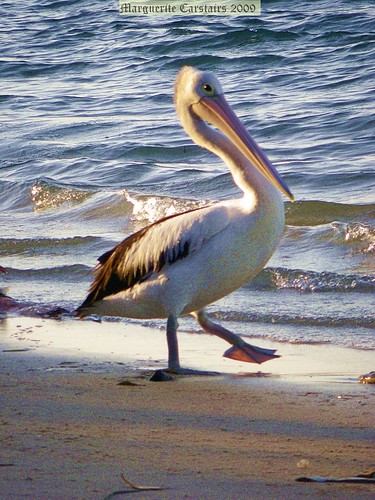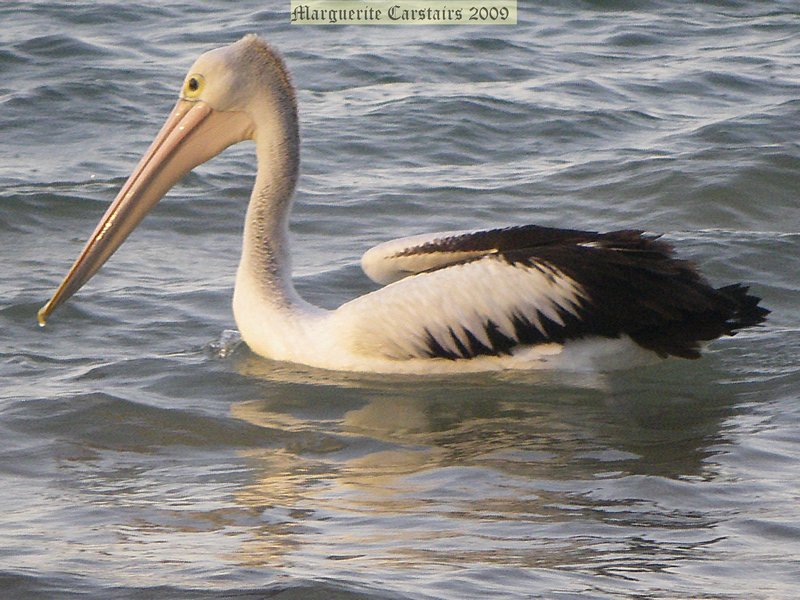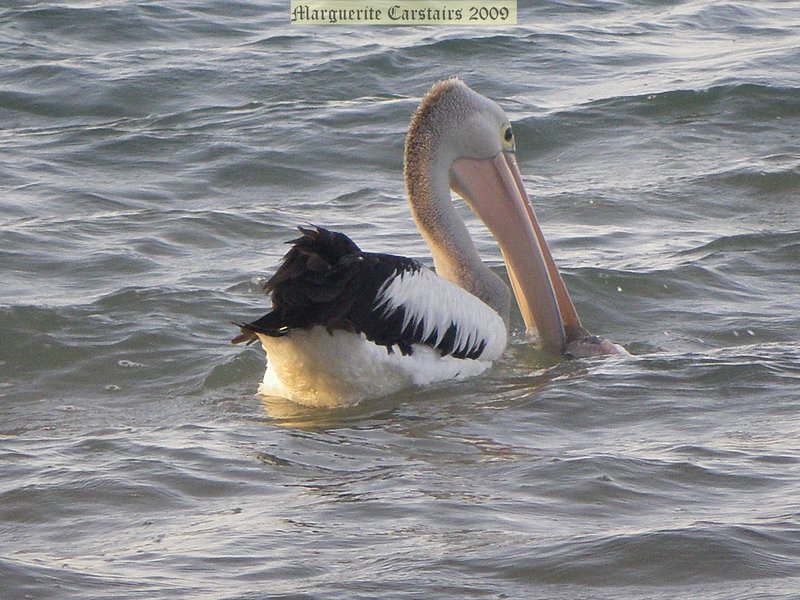The day had been good for fishing, and five fish skeletons were left for the birds.
A pelican and a whole group of seagulls were on the shore after the fish.
I took many photos.
This is when the pelican walked to the shore, grabbed on of the fish and took it back out to sea to swallow it whole.
There are seven species of pelicans in the world, all of which are similar in shape and, with one exception, are primarily white in colour. Males are larger than females. The most characteristic feature of pelicans is the elongated bill with its massive throat pouch. The Australian Pelican's bill is 40 cm - 50 cm long and is larger in males than females. Pelicans have large wings and a wingspan of 2.3 m - 2.5 m.
Pelicans are highly mobile, searching out suitable areas of water and an adequate supply of food. Pelicans are not capable of sustained flapping flight, but can remain in the air for 24 hours, covering hundreds of kilometres. They are excellent soarers and can use thermals to rise to considerable altitudes. Flight at 1,000m is common, and heights of 3 000 m have been recorded. By moving from one thermal to the next, pelicans can travel long distances with a minimum of effort, reaching air speeds of up to 56 km/hour.
http://birdsinbackyards.net/bird/82



140x45.jpg)




No comments:
Post a Comment